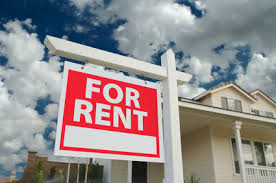 With the highest number of rental units affordable to the typical renter and the lowest median rent, Dallas and Houston were the two most affordable rental housing markets among 11 large U.S. cities, according to the NYU Furman Center/Capital One National Affordable Rental Housing Landscape.
With the highest number of rental units affordable to the typical renter and the lowest median rent, Dallas and Houston were the two most affordable rental housing markets among 11 large U.S. cities, according to the NYU Furman Center/Capital One National Affordable Rental Housing Landscape.
The Landscape examines rental housing affordability trends in the central cities of the nation’s largest metropolitan areas (New York, Los Angeles, Chicago, Houston, Philadelphia, Dallas, San Francisco, Washington, DC, Boston, Atlanta and Miami) from 2006 to 2013 and illustrates how these trends affected renters as more households chose to rent and rental costs increased.
While rental housing has remained relatively affordable in Dallas and Houston for middle-income renters, in both cities it remained out of reach for many low-income households. For example, in 2013, 78 percent of Houston’s low-income renters were severely rent-burdened, facing housing costs equal to half or more of their income, compared to only 12 percent of moderate-income renters. Low-income renters earn no more than the 25th percentile income of metropolitan area rental households; moderate-income renters earn more than the 25th percentile and up to the median income of rental households in the metropolitan area.
“Dallas and Houston remained relatively affordable among large cities despite increasing demand for rental units,” said Ingrid Gould Ellen, faculty director of the NYU Furman Center. “Both Texas cities had enough slack in their rental markets to absorb the growing number of renters without leading to major increases in rent. In Dallas, renters appear to have moved into previously vacant units, while renters in Houston generally moved into newly constructed homes.”
“With rents remaining steady, it is encouraging to see that moderate-income renters are able to take advantage of the current housing conditions in Dallas and Houston. Despite this positive news, however, low-income households continue to struggle,” said Laura Bailey, Managing Vice President, Community Finance at Capital One, one of the nation’s top 10 affordable housing lenders. “Working with leading housing developers, our goal is to invest in quality developments that will both endure over time and also help address broader needs in the local community. For us, our investment in affordable rental housing means more than just financing construction – it means expanding economic opportunity for individuals and families in the Dallas and Houston communities.”
The Landscape uncovered the following findings for Dallas:
Key Study Findings: Dallas
- From 2006 to 2013, the number of renter households in Dallas increased by 18 percent, the fifth highest rate of increase among cities studied.
- Although Dallas had a high rental vacancy rate in both 2006 and 2013 (ranking second-highest in 2006 and third-highest in 2013), between those years the rate dropped precipitously from 13 percent to 7.6 percent.
- In 2013, the median renter in Dallas had an income of about $32,900, the fourth lowest among the cities studied, and a gross rent of about $840, tied with Houston for lowest among the cities in this study.
- In 2013, just under 10 percent of moderate-income renters were severely rent-burdened, the lowest share among the 11 cities examined. The typical renter could afford nearly 60 percent of recently available units in Dallas in 2013—a larger share than in any of the other cities examined.
- In 2013, 72 percent of low-income renters (with incomes in the bottom quartile of metropolitan area renter households) were severely rent-burdened, placing Dallas near the middle among the cities studied. Low-income renters could afford less than seven percent of recently available units.
The complete NYU Furman Center/Capital One National Affordable Rental Housing Landscape and additional information are available online at www.CapitalOneInvestingforGood.com and www.furmancenter.org/NationalRentalLandscape.




